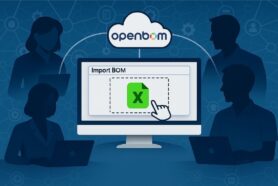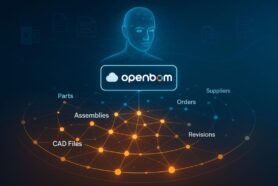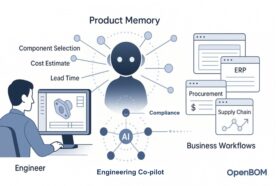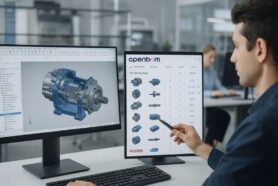
Digital Transformation has become a priority for companies these days. We live in a time where companies are going through a massive upheaval of changing the way they design, prototype, manufacture, and operate products. Digital transformation means many things, but one thing is very clear and important – the need to change the way companies work with their information. Part of this change is to rapidly switch from the old fashion way of trapping information in documents or working using formats that are very much mimicking paper storage.
Challenge of Digital Transformation
While talking to many manufacturing companies and engineers, we still can see how Bill of Materials – one of the most essential parts of product data – is still trapped in multiple Excel documents and spreadsheets. Companies are continuously moving these files around, create copies when they need to re-use the data in multiple projects, and then get lost with no single version of truth that can unlock the information, make it easier to understand, traceable, and most importantly infinitely much more trusted because of the need to work on the same set of information instead of duplicating it all the time.
12 Trends To Unlock Digital Transformation Journey
Engineering.com article Top 12 Trends and Enablers to Unlock Every Digital Transformation speaks about important aspects of IT development in manufacturing companies and urgencies impacting digital twins, digital threads, and systems as components of sustainable digital transformation. The article outlines Peter Billelo of CIMdata, the leading analytical and service outfit consulting industrial companies for many years.
My favorite passage from the article is about switching from BOM to BOI (Bill of Information).
The Bill of Information (BoI) is a comprehensive and structured approach to managing product data. This data construct mimics Bill of Materials (BoMs) that tally every component, instance, source and cost of a product’s parts. A BoI will also include supporting data like requirements, process definitions, options and variants, as well as decisions and their associated rationales. Fundamentally, the BoI tracks everything going into a product or service and their virtual counterparts (as in digital twins, see below).
Compiling everything representing a physical product (or service) into one logical BoI structure can be a challenge. And PLM can be a big help. A BoI must link each and every component, sub-component and every variant with unique views, serial numbers, suppliers, analyses, test data, materials, tooling and much more. Variants and components often have their own BoMs, sometimes dozens of them, with no two alike.
5 Things OpenBOM Provides To Support Bill of Information Model
The message is really resonating with everything OpenBOM does these days. Here are 5 things about OpenBOM you should learn to make your next decision about moving from your document-oriented spreadsheets to an online, robust, and scalable data management system.
1- SaaS, Robust and Scalable Infrastructure
OpenBOM infrastructure is online and available on-demand. No need to install, setup, and configure servers and components. Everything is available immediately, accessible across the globe, and can scale infinitely.
2- Modern Data Management Architecture
The last 15-20 years create a completely new set of data management technologies capable of scaling globally, providing flexibility and robustness never seen before in the old SQL-based client-server PDM and PLM systems. OpenBOM relies on the powerful polyglot persistence data architecture, using multiple modern and scalable NoSQL and Graph Databases to manage data flexibly and robustly.
3- Flexible Data Model to create structured BOIs and engineering integrations (CAD)
Flexibility in data is a key to success. OpenBOM Flexible Data Model is a way to capture the rich set of information, manage product structures including multi-disciplinary data sets and build links to external data sources.
4- Real-time seamless collaboration
To have the same data shared, viewed, and edited seamlessly is important. OpenBOM developed a patented BOM collaboration method allowing all team members, companies, and contractors to get access to the same information through the structured and role-based controlled mechanism. All updates are made in sync and everyone stays on the same BOM.
5- Multi-tenant platform to connect multiple data sources and companies (company teams, contractors, suppliers, etc)
OpenBOM platform can be used across multiple companies. It removes the limitations of old data management systems that only manage data for a single company and forces all teams, contractors, suppliers to store the data in a single database. OpenBOM gives a platform that can be used by multiple users and companies at the same time and share data seamlessly between companies and data sources.
Conclusion
Modern manufacturing is shifting from old documents and paper-oriented processes to modern digital methods of work. To make it successful, companies need to have a proper digital infrastructure in place to lay down the foundation of the digital process – digital information managed in a native form. Even if you pull your Excel into an online Google Spreadsheet, you still don’t have a good way to connect information, manage revisions, connect multiple sources of data and multiple facets of information.
OpenBOM platform provides a flexible data model and online platform to give a new meaning to your cluttered data and create a foundation for your future digital business.
Check what OpenBOM can do for you REGISTER FOR FREE and start your 14-day trial.
Best, Oleg
Join our newsletter to receive a weekly portion of news, articles, and tips about OpenBOM and our community.










